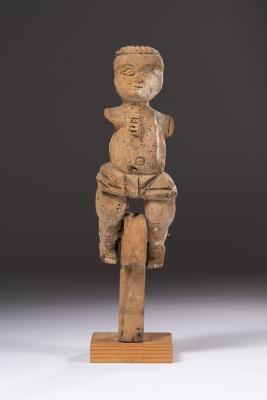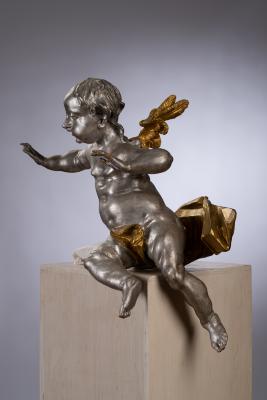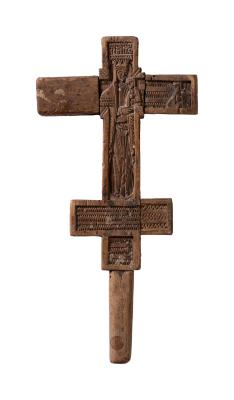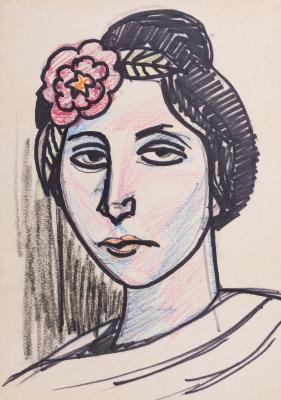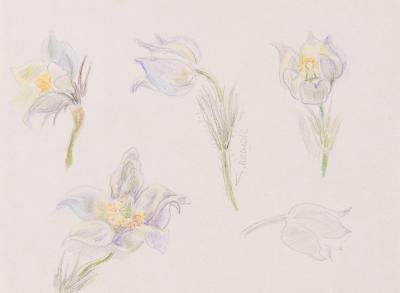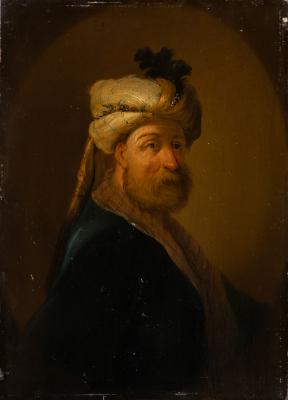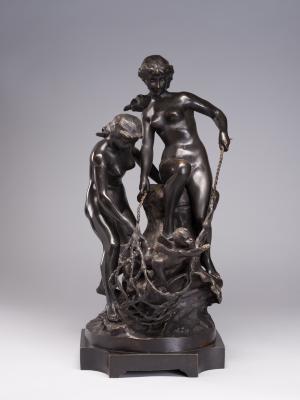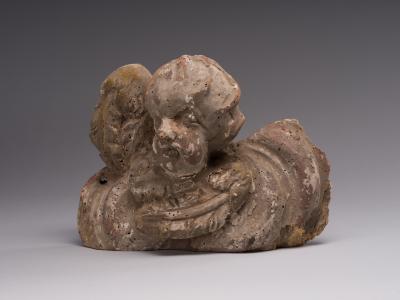This is a bust-length portrait of a young woman; she is looking directly at the viewer. The portrayed woman has a tanned face and black wavy hair parted in the middle, which is falling down on her shoulders with two small strands. The woman is dressed in a white shirt. There are six strings of the red and orange necklace on her neck. The background is ochre-green. There is a brown circle with a blue stripe around the girl's head. The bottom and side edges of the sheet are outlined with an orange stripe. On the back of the portrait there is a pencil sketch of the girl in the crown sitting with her hand outstretched. Under the image of the girl there is another female figure standing. Besides, there are two female heads there. On the right, there are two waist-length images of women: the hands of one of them are folded at the bottom, the other one is holding a bird. These are probably sketches for the composition “Yaroslavna's Lament”. Most of Boichuk's works were destroyed after his execution by the Soviet authorities in 1937. However, some of Mykhailo Boichuk's works have been preserved thanks to the Lviv artist Yaroslava Muzyka, who, since 1914 when Mykhailo Boichuk was forced to leave Lviv with no opportunity to take his paintings with himself, had in keeping the artist's works and his small but significant archive. The Yaroslava Muzyka Fund is housed in the Lviv National Art Gallery. Presumably, the works we see now are only drafts and sketches for greater compositions.










